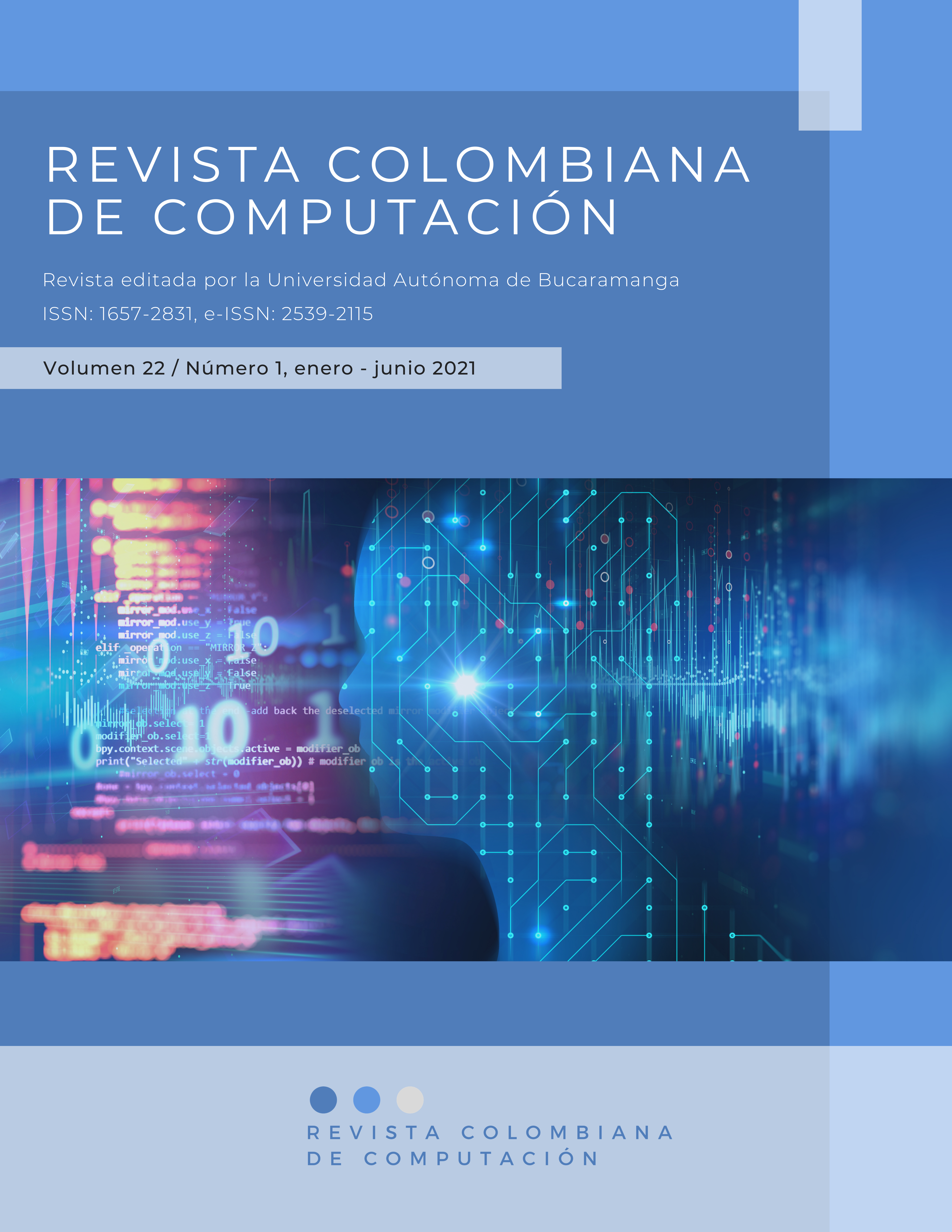Simulación en tiempos de pandemia
Resumen
La computación en América Latina y principalmente en Colombia ha tenido avances significativos en los últimos años dados por la velocidad de los cambios en esta área del conocimiento que son debidos generalmente a la aparición de nuevas tecnologías. En este sentido, se ha identificado que la aplicación de herramientas informáticas en diversos entornos de trabajo e innovación gracias al crecimiento de Internet, así como los efectos de la pandemia, están orientadas a mejorar la calidad de vida de las personas, y en general de instituciones en las cuales la forma de trabajo se ha redefinido.
Referencias bibliográficas
Bertoglio, N., Lamperti, G., Zanella, M., & Zhao, X. (2020). Temporal-Fault Diagnosis for Critical-Decision Making in Discrete-Event Systems. Procedia Computer Science, 176, 521–530. https://doi.org/10.1016/j.procs.2020.08.054
Cuadros, D. F., Branscum, A. J., Mukandavire, Z., Miller, F. D., & MacKinnon, N. (2021). Dynamics of the COVID-19 epidemic in urban and rural areas in the United States. Annals of Epidemiology, 59, 16–20. https://doi.org/10.1016/j.annepidem.2021.04.007
Cuevas, E. (2020). An agent-based model to evaluate the COVID-19 transmission risks in facilities. Computers in Biology and Medicine, 121, 103827. https://doi.org/10.1016/j.compbiomed.2020.103827
Das, A. (2020). Impact of the COVID-19 pandemic on the workflow of an ambulatory endoscopy center: an assessment by discrete event simulation. Gastrointestinal Endoscopy, 92(4), 914–924. https://doi.org/10.1016/j.gie.2020.06.008
Fair, J. M., LeClaire, R. J., Dauelsberg, L. R., Ewers, M., Pasqualini, D., Cleland, T., & Rosenberger, W. (2021). Systems dynamics and the uncertainties of diagnostics, testing and contact tracing for COVID-19. Methods. https://doi.org/10.1016/j.ymeth.2021.03.008
Ibarra-Vega, D. (2020). Lockdown, one, two, none, or smart. Modeling containing covid-19 infection. A conceptual model. Science of The Total Environment, 730, 138917. https://doi.org/10.1016/j.scitotenv.2020.138917
Kierzkowski, A., & Kisiel, T. (2020). Simulation model of security control lane operation in the state of the COVID-19 epidemic. Journal of Air Transport Management, 88, 101868. https://doi.org/10.1016/j.jairtraman.2020.101868
Kontogiannis, T. (2021). A qualitative model of patterns of resilience and vulnerability in responding to a pandemic outbreak with system dynamics. Safety Science, 134, 105077. https://doi.org/10.1016/j.ssci.2020.105077
Lim, C. Y., Bohn, M. K., Lippi, G., Ferrari, M., Loh, T. P., Yuen, K.-Y., Adeli, K., & Horvath, A. R. (2020). Staff rostering, split team arrangement, social distancing (physical distancing) and use of personal protective equipment to minimize risk of workplace transmission during the COVID-19 pandemic: A simulation study. Clinical Biochemistry, 86, 15–22. https://doi.org/10.1016/j.clinbiochem.2020.09.003
Silva, P. C. L., Batista, P. V. C., Lima, H. S., Alves, M. A., Guimarães, F. G., & Silva, R. C. P. (2020). COVID-ABS: An agent-based model of COVID-19 epidemic to simulate health and economic effects of social distancing interventions. Chaos, Solitons & Fractals, 139, 110088. https://doi.org/10.1016/j.chaos.2020.110088
Tatapudi, H., Das, R., & Das, T. K. (2020). Impact assessment of full and partial stay-at-home orders, face mask usage, and contact tracing: An agent-based simulation study of COVID-19 for an urban region. Global Epidemiology, 2, 100036. https://doi.org/10.1016/j.gloepi.2020.100036












